Choose the right things to plant to benefit wildlife—and yourself.
I usually wake up well before daylight. With a cup of coffee in hand, I step outside, where I collect my thoughts and prepare for the upcoming day. It’s a peaceful time, when the sounds that greet me are the “hoots” of the barred owl in a nearby tree. Sometimes, I see a fox family, kits and all, move across the yard after a night of hunting. Occasionally, a skunk or raccoon will amble past as they head for home (the skunk lives under the shed, and the raccoon lives somewhere farther into the woods).
You might be asking yourself, “What does all this have to do with landscaping?”
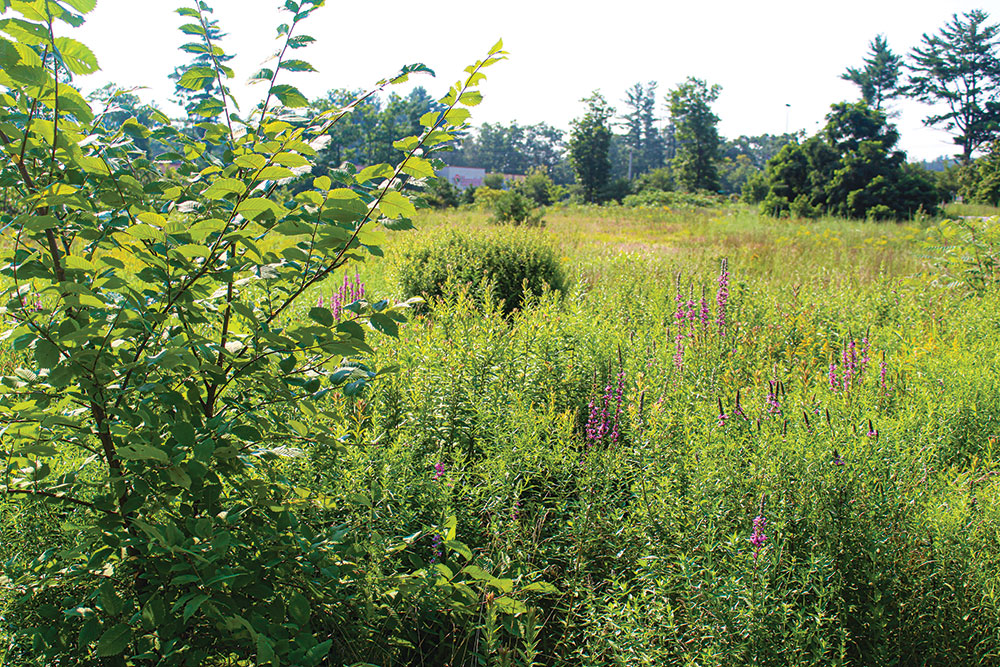
It’s very simple: Encouraging wildlife to visit your property will benefit you, both physically and mentally. Physically, you’ll benefit by having bees, butterflies and hummingbirds visit your crops—and thus increase your harvest.
Mentally, having wildlife around has a calming effect. Studies have shown that animal contact, no matter how fleeting, reduces stress and lowers your blood pressure. Why do you think people have the desire to visit zoos? Seeing wildlife makes you feel as if you’re really part of the world around you. It makes you feel reconnected; it gives you peace of mind.
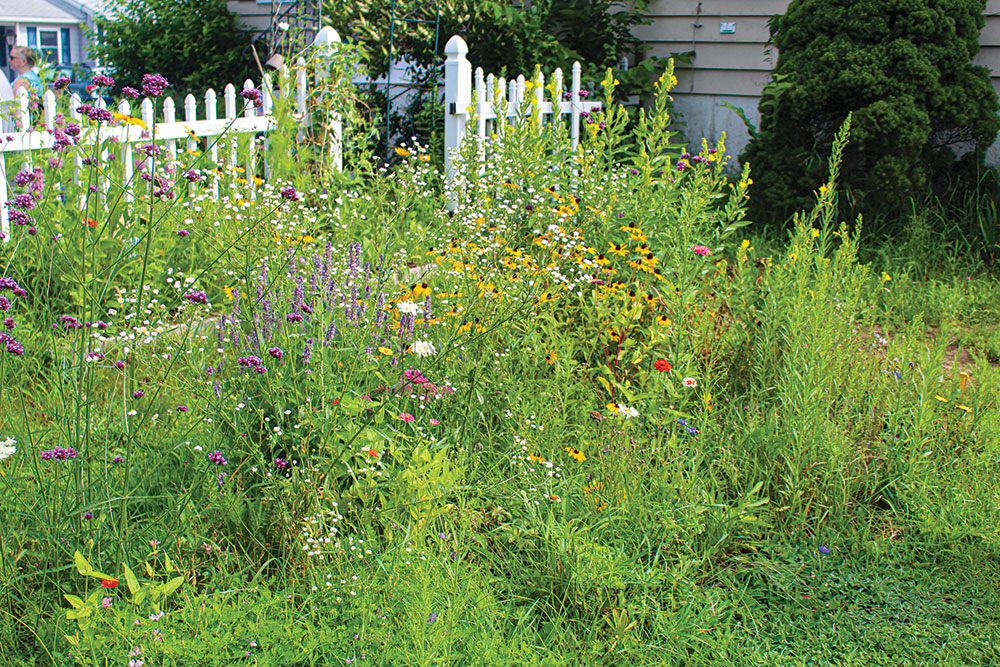
None of these animals would be around here—certainly not in the numbers they are—if I didn’t landscape and manage my property with the environment in mind. Part of that management revolves around the plants that I’ve added, or have been encouraged to, and how and where I plant them.
REASONS TO PLANT
There are many reasons people choose certain plants over others. Some people are hunters; they might clear natural forest and then plant fields of introduced crops to entice deer into the fields. Other people spend hundreds, if not thousands, of dollars on annuals (flowers that last only one season). Still others want lush, green lawns, exotic trees and ornamental shrubs. Lastly, there are people like me who plant with the environment—including wildlife—in mind.
GOING NATIVE
At a minimum, all animals, including humans, need three things: food, water and shelter. No matter where you live—whether it’s the Desert Southwest or the forests of the Northeast—if you’re going to landscape with the environment, you need to keep those three things in mind.
Your best bet is to stick to the plants that are naturally found in your area. In fact, areas in the same geographic region could have subtle differences. For example, southern New Hampshire is different than northern New Hampshire. There are different species of animals and trees and a different climate.
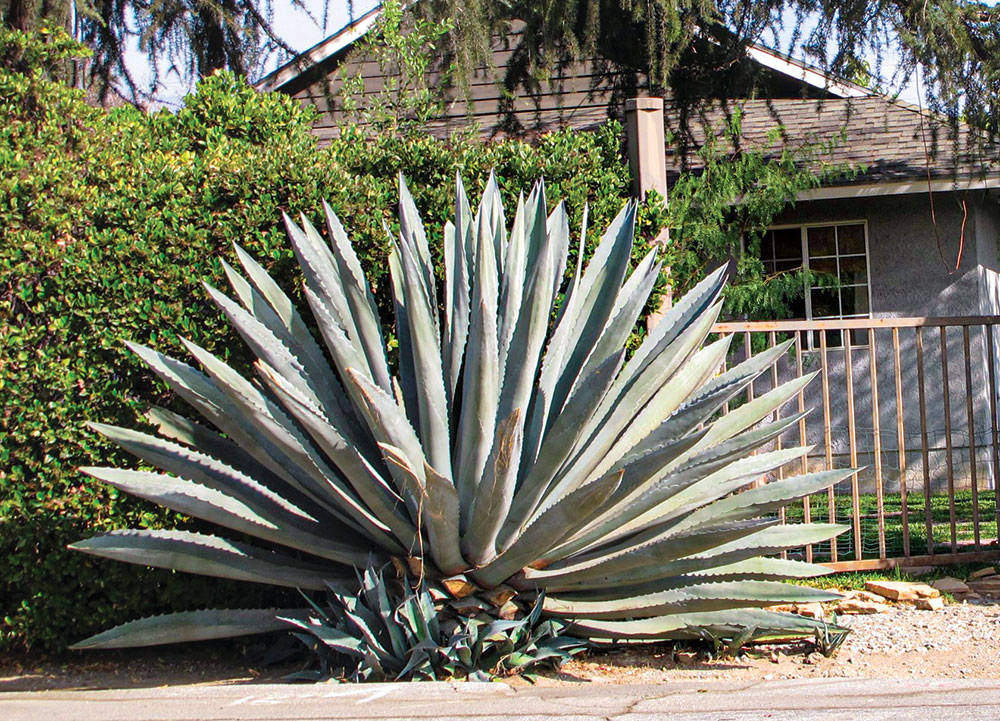
Why is this important? Well, animals, birds and insects are naturally programmed to eat certain things and make their homes in and around certain species of trees, bushes and grasses. Another reason is that the plants have evolved to thrive in certain areas better than in others—certain climate, certain soil type, etc.
For you, the property owner, the benefit is less upkeep. Native plants need less watering, less pruning, less fertilizer (if any). All this equals less money spent and fewer worries.
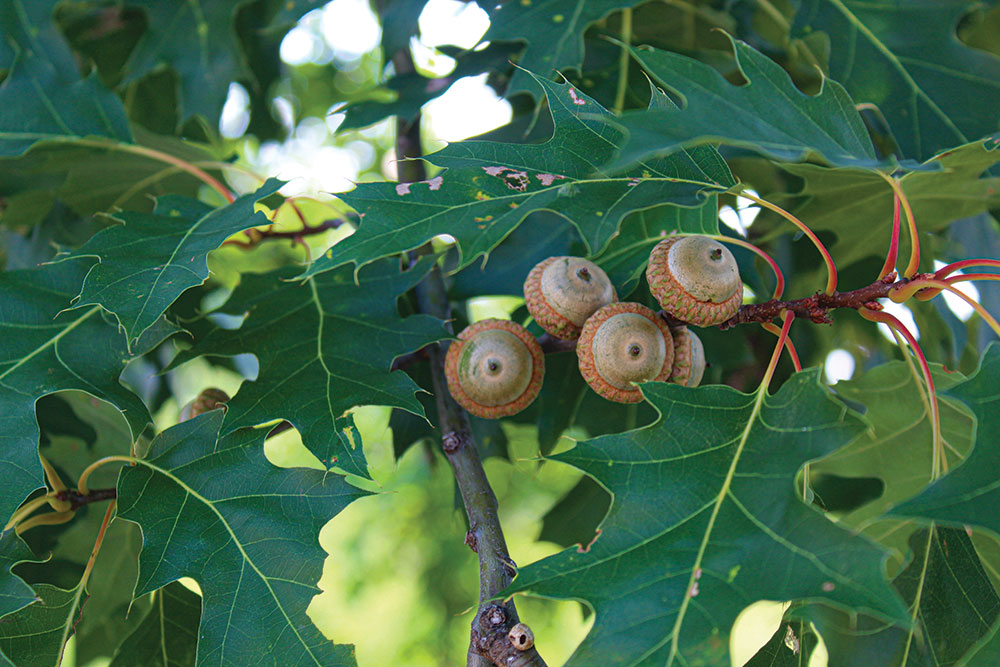
Exotics, on the other hand, are a different story. Just as prickly pear cactus would not survive in my area, you wouldn’t plant a sugar maple in Arizona. With that being said, some exotics have almost become “natives” over the years. Cases in point are apple, pear and other forms of fruit trees. All these trees provide food for wildlife and humans alike.
MORE NATIVE PLANT BENEFITS
The benefits to you as the landowner are numerous:
- Not only do you provide food for wildlife, you also provide food for your family.
- You save money on cooling and heating costs, because trees and some other plants provide shade in the summer and windbreaks in the winter.
- You encourage pollinators to your garden.
- Some plants have medicinal properties.
- These plants require little to no cost to maintain.
The following is a short list of “good” plants to consider planting on your property. Of course, where you live will determine the best option for you.
TREES
When it comes to trees, I like to allow the native trees to self-seed. Then, I thin out the ones that aren’t where I like them. I’ve found some of the true native trees are hard to transplant. Cultivated varieties, usually fruit trees or ornamentals, are much easier. Some of my favorites include:
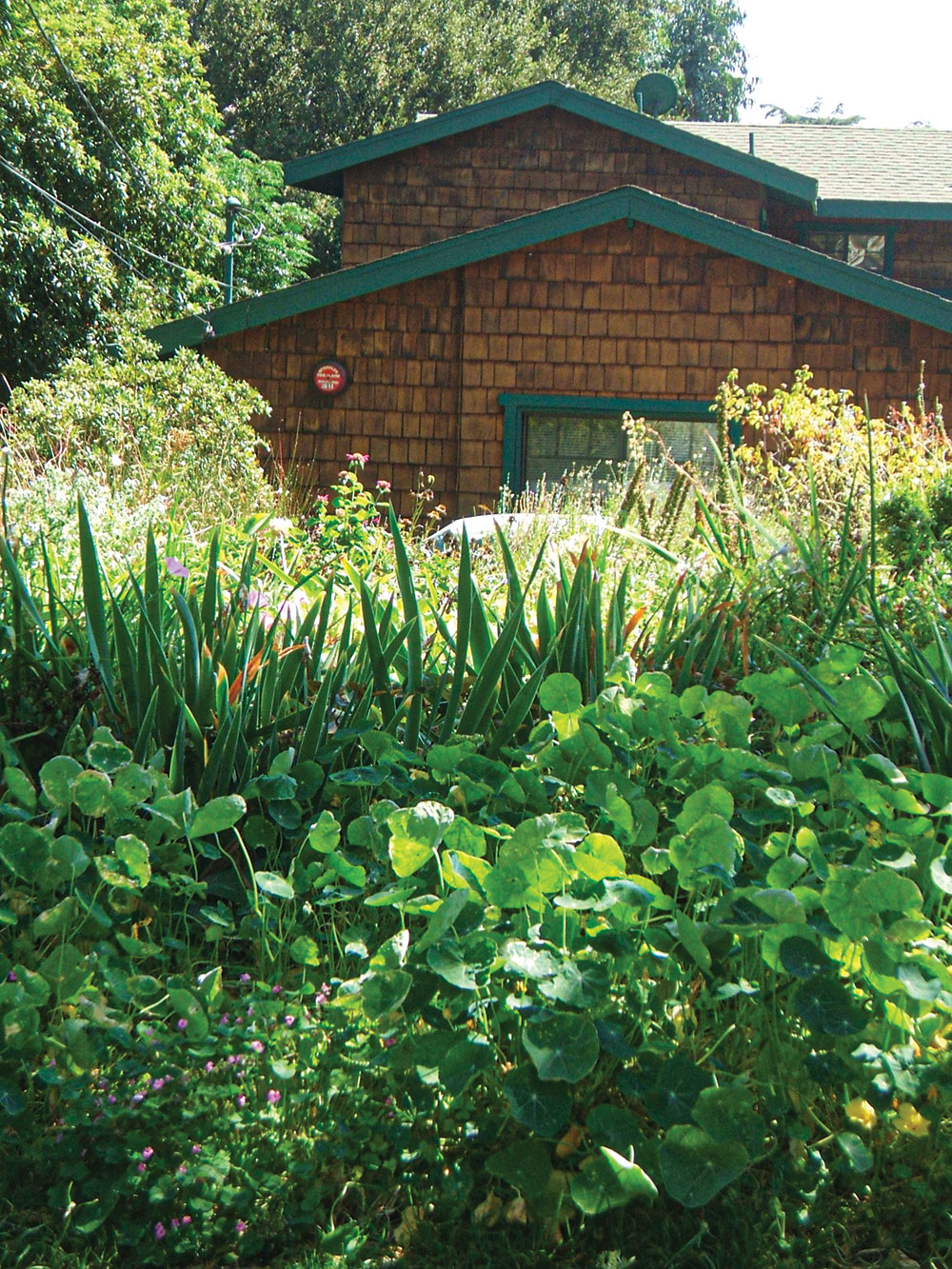
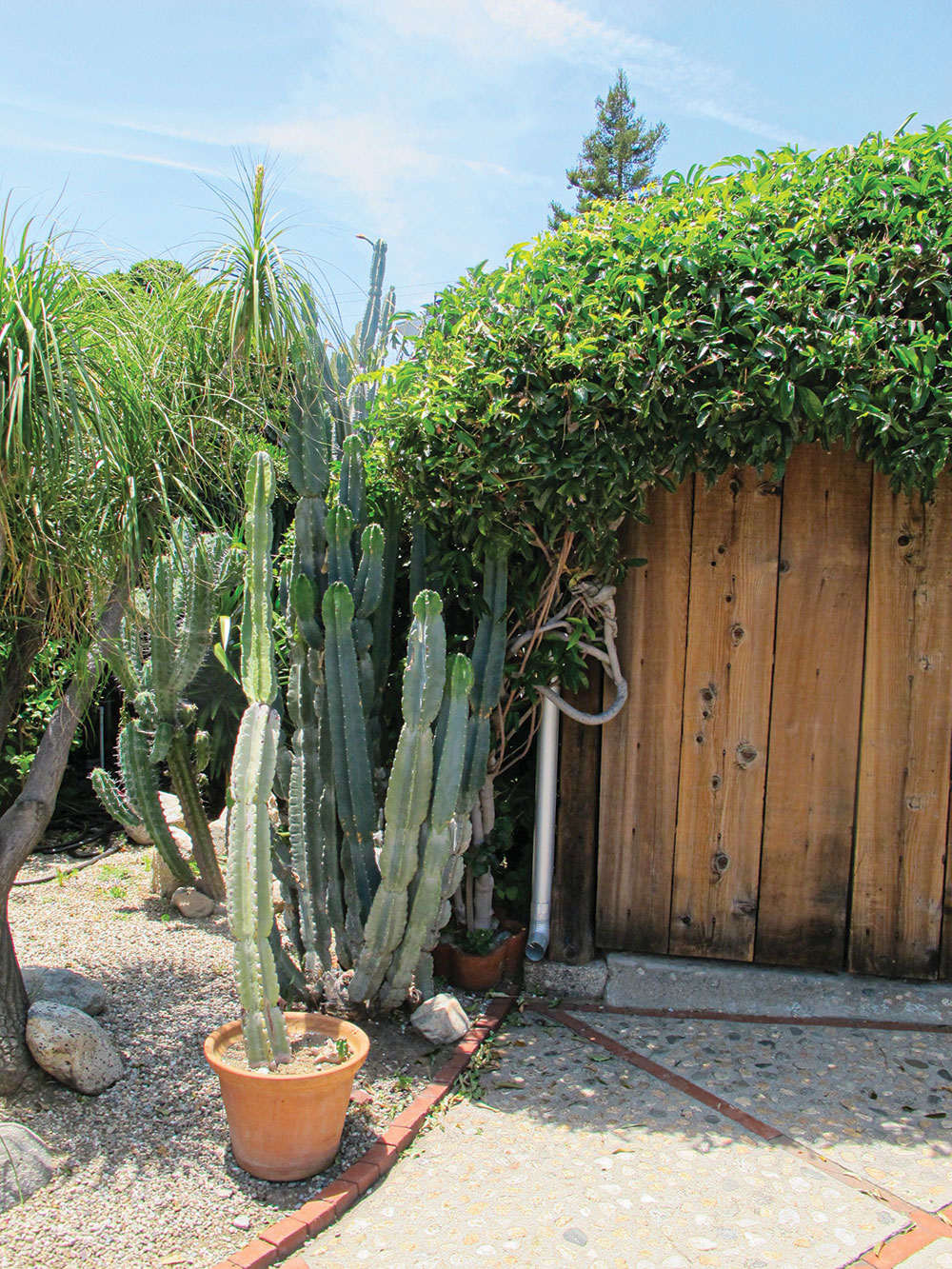
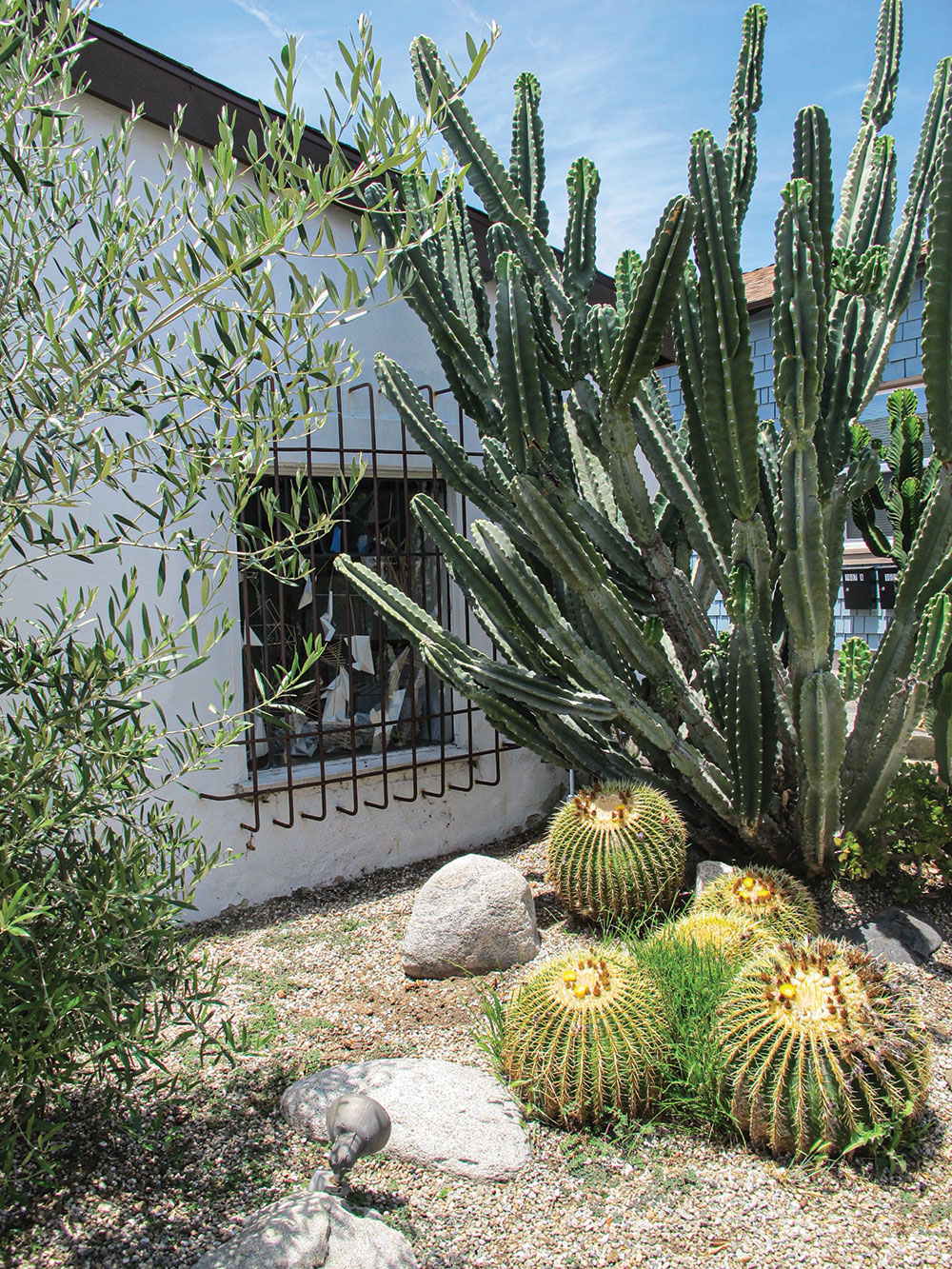
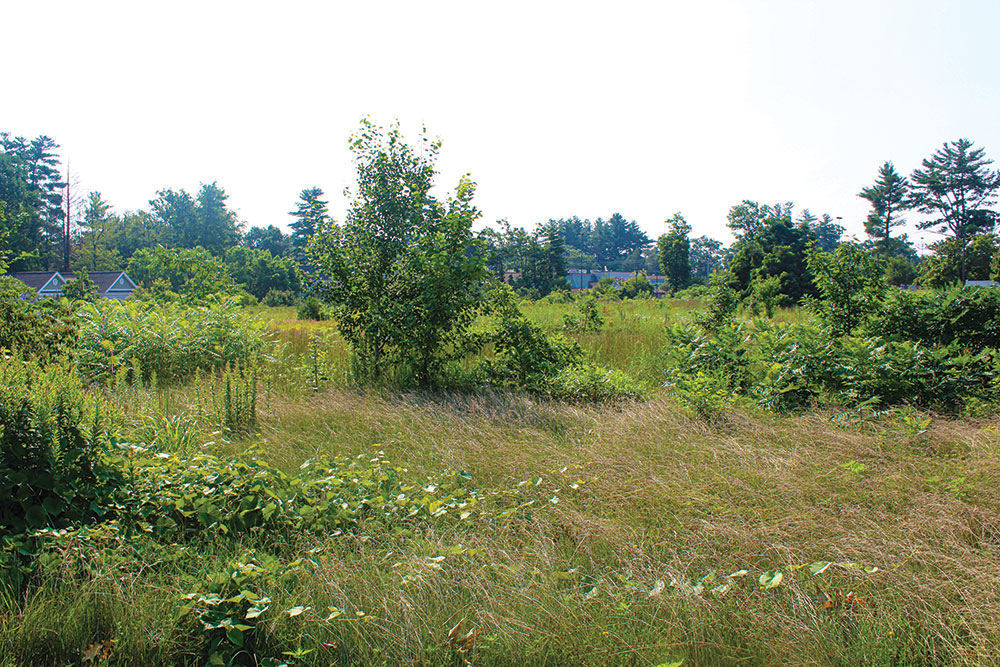
Evergreens. Evergreens, such as pine, hemlock, spruce, tamarack and cedar, work great on the north side of the property, because they offer both shade in the summer and work as windbreaks in the winter. White pines, while they have many uses, aren’t my choice, because they often break during storms.
Cherry. Cherry trees are native to many areas. If you purchase cherry trees, make sure to purchase fruit-producing varieties. These medium-sized trees tend to do well. In no time, you’ll have fruit for pies. You’ll also be a friend to all sorts of birds, chipmunks, squirrels and even fox.
Apple. Any type of apple tree will do. Apples are very popular with grouse, turkey, bear and deer. If your intent is purely human consumption, regular pruning is best.
Peach. There are many varieties of peach trees out there, so make sure you find one suitable for your area.
Crabapple. These trees produce an abundant amount of fruit right into the fall. They also hold their fruit into winter, making them popular with cardinals and cedar waxwings. Crabapples also make great jelly.
When planting any tree, make sure you keep it watered until it becomes established.
BUSHES
Bushes provide both food and cover for many types of wildlife.
Rhododendron. These bushes grow wild in many areas of the United States, and their beautiful flowers provide food for bees, butterflies and hummingbirds. They also provide cover for many birds. Robins, mockingbirds and catbirds nest in mine. They also add beauty to your yard in the spring.
Blueberry. Blueberry bushes and their cousins, the cranberry and elderberry, provide a great food source for humans and wildlife alike. All these bushes grow wild throughout the country, and there are many cultivated varieties available for all areas.
Wild Blackberry and Raspberry. Perhaps the easiest bushes to have are wild-growing blackberry and raspberry bushes. These bushes, whose seeds are scattered by birds and other animals, seem to be just about everywhere. No care is needed (with the exception of occasional pruning to keep them from taking over).
FLOWERS
Flowers are vitally important but are too numerous to list. Flowers that grow wild as perennials in the Northeast might only be available as annuals in Arizona (and vice versa). All native flowers, no matter how small, attract pollinators. Some are edible, such as dandelions (which are actually an introduced plant) and sunflowers (its seeds are a favorite of both humans and wildlife). Over time, each area of the country has naturally developed its own wild flowers that are uniquely designed for that environment.
“For you, the property owner, the benefit is less upkeep. Native plants need less watering, less pruning, less fertilizer (if any). All of this equals less money spent and fewer worries.”
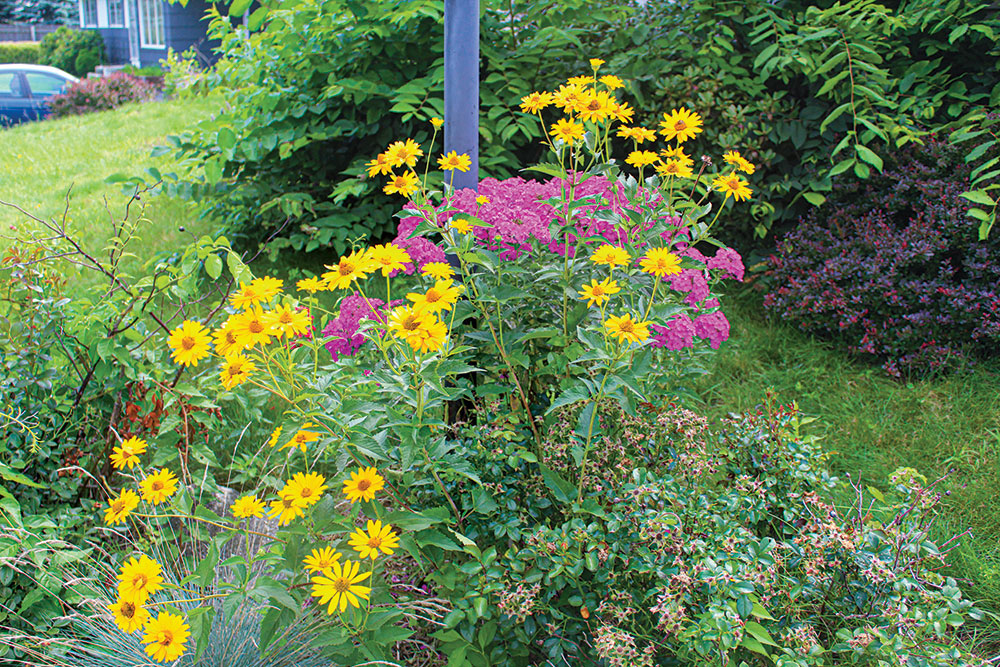
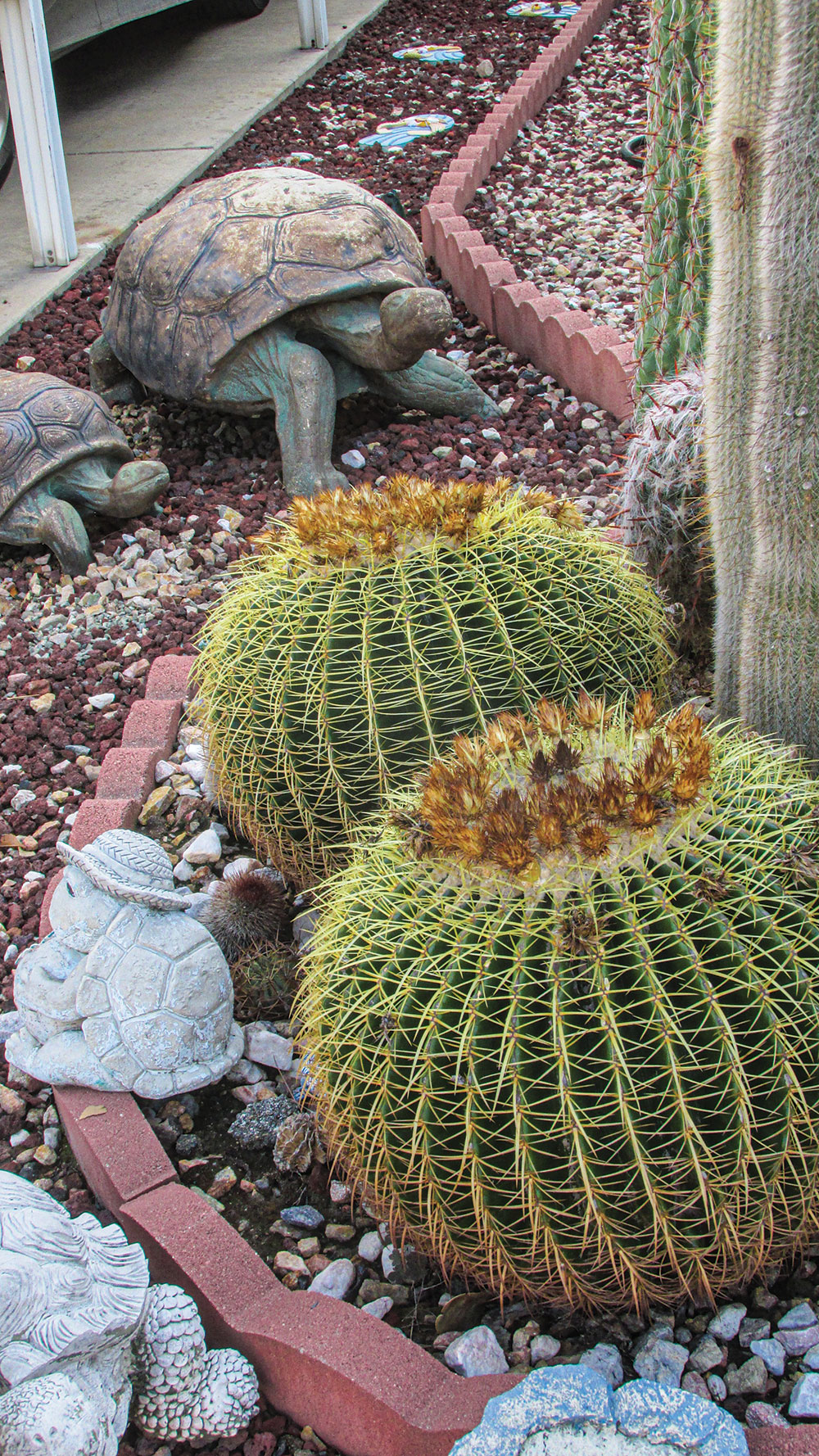
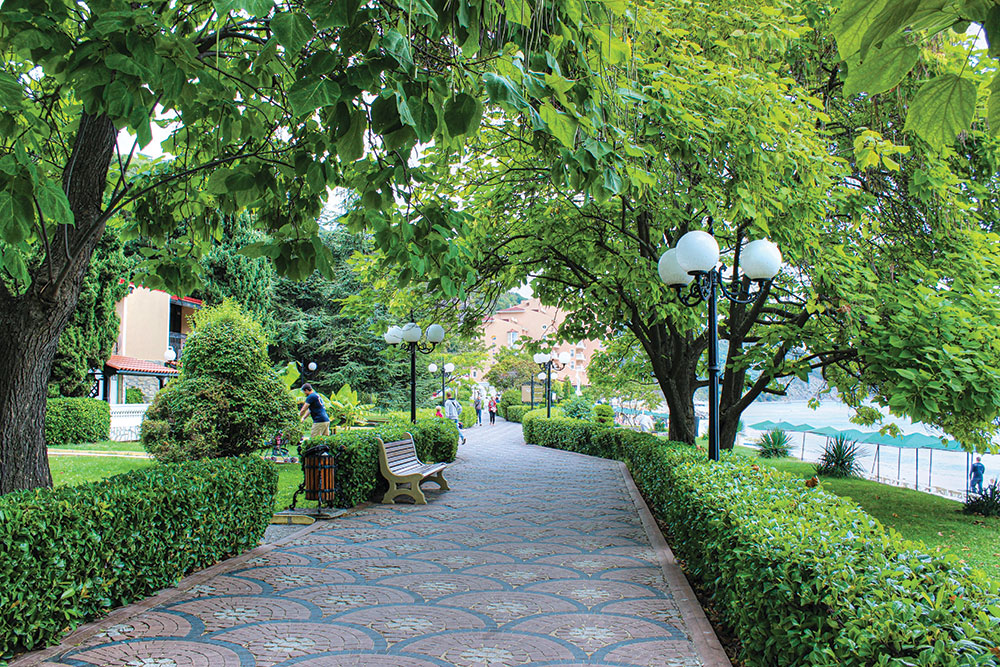
SET IT UP
When setting up your landscape to benefit the natural world, you have to mimic nature.
Plants grow and thrive in zones ranging from field to forest. Think of your property as field (in which you’d normally plant grass), and build up from there. Fields move on to areas of bushes and small trees and then to forests. When setting up your landscape, keep in mind that trees do grow in fields and that flowers do grow in forests.
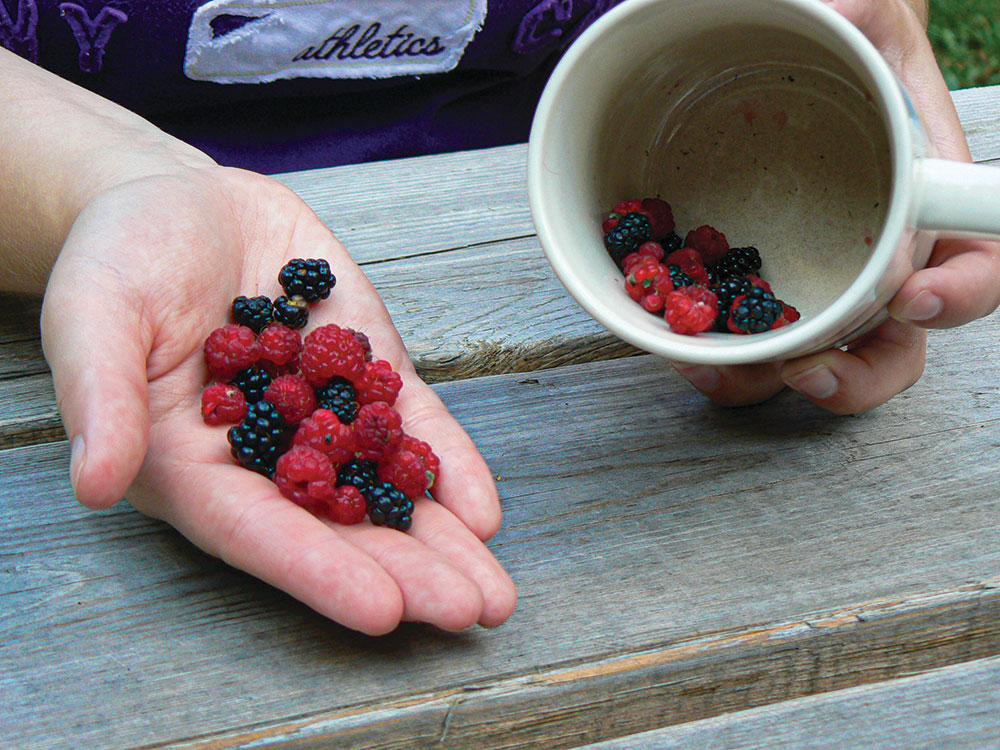
The best way to describe this is to use the word, “terrace.” On my property, the “forest” (area of large trees) forms the edge. Naturally seeded maples and ash are found here. Next come smaller trees, such as cherry, dogwood and elm, along with bushes, such as lilacs, rhododendrons, blueberries and blackberries.
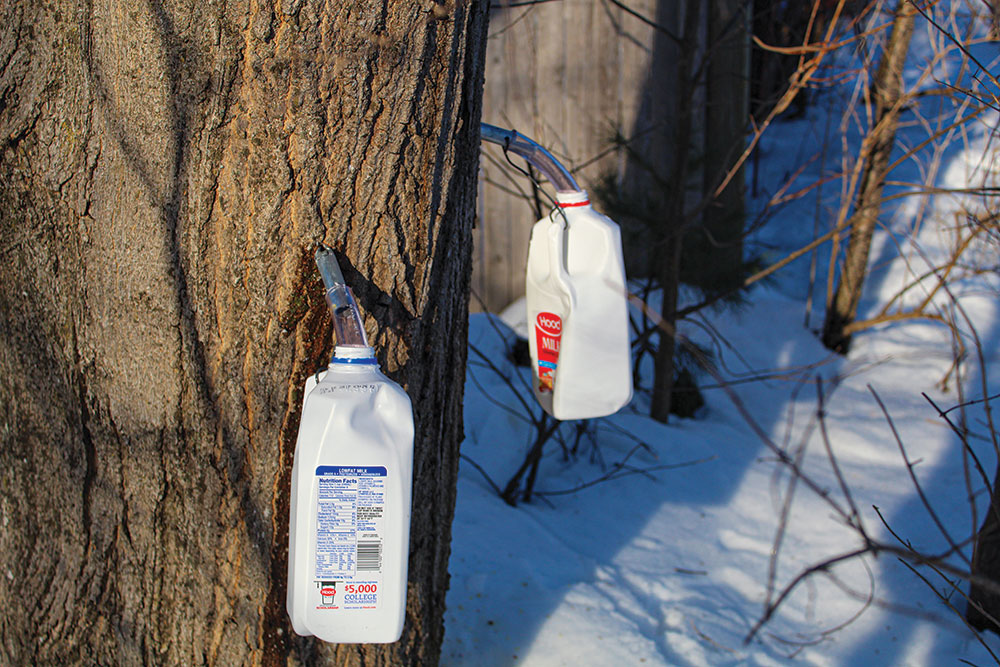
Just as they would be found on an old, abandoned farm, I used to have crabapple and apple, but both fell during a severe winter storm. Within the “field,” sit my home, garden and a small patch of grass (to make my wife happy). Other than that are flowers and native grasses of all sorts that attract a variety pollinators.
GROW IT, AND THEY WILL COME
There’s no one way to set up a wildlife-friendly landscape. Species of plants will differ from one environment to the next. They’ll also differ with each person’s idea of what’s “desirable.”
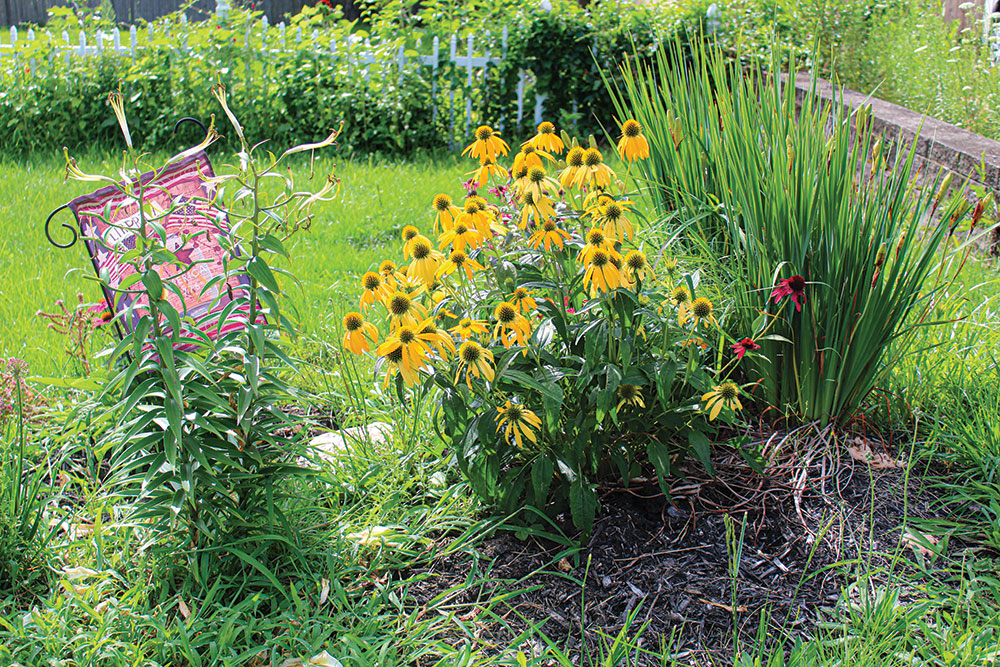
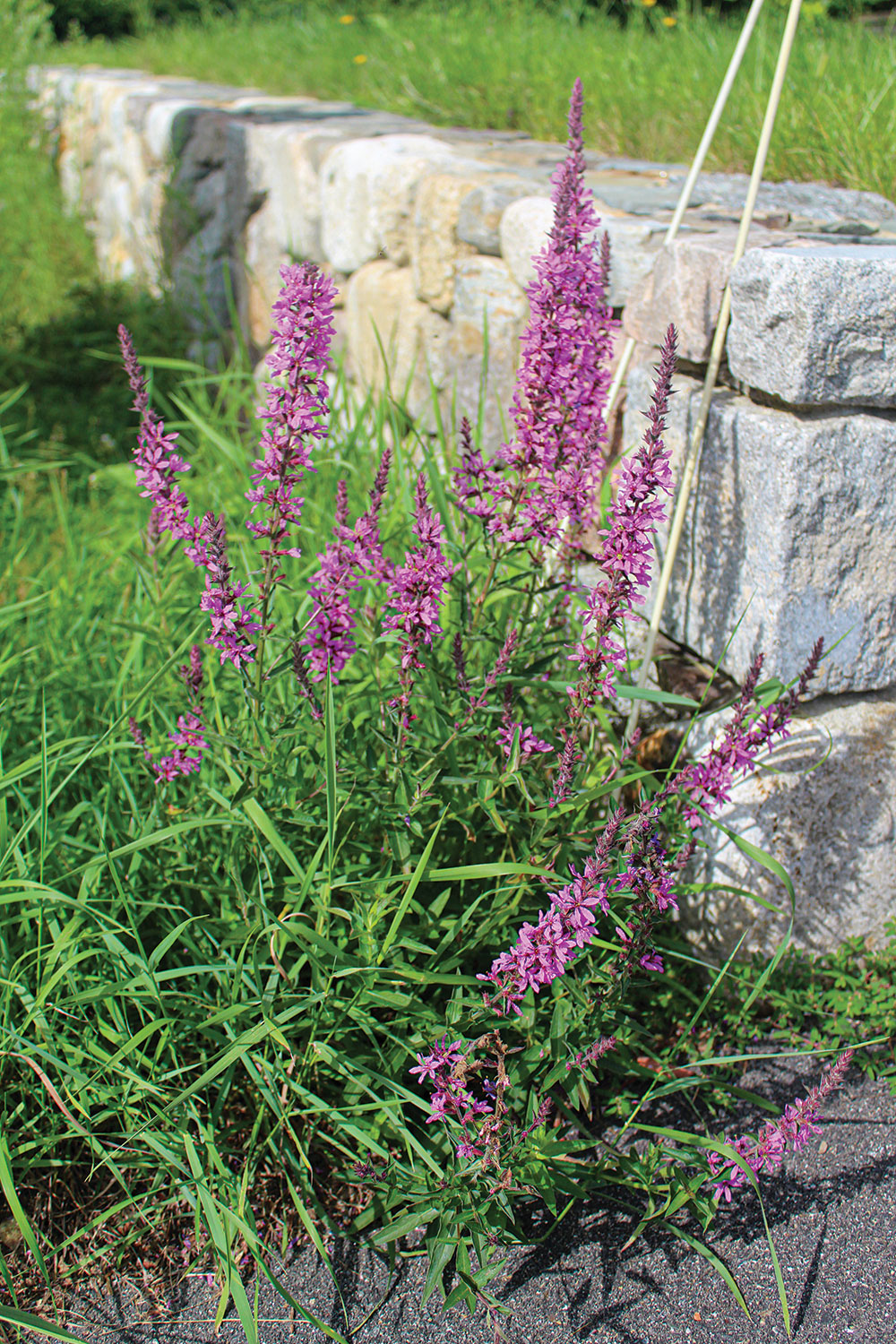
However, remember that if you provide elements of food, water and shelter, wildlife will come. It might happen right away, or it could take some time, but they will come. And, when they do, you’ll be a much better person for it.
TOOLS OF THE TRADE
When it comes to tools, no major investment is needed for planting. In fact, you might already have most of them.
Long-handled spade. You’ll need to dig some good-sized holes, especially if you’re planting trees and bushes.
Lopping shears. All trees and bushes will need to be cut back from time to time. Lopping shears have the power needed to get through moderately sized limbs.
Small crosscut saw. This tool will handle larger limbs or that dead, storm-damaged tree.
RECIPE: BLACK AND BLUE CORNBREAD
It’s always nice to benefit physically from the landscape you’ve developed. Here’s a recipe that uses both blueberries and blackberries.
Black and Blue Cornbread
Ingredients:
1 cup all-purpose flour
¼ cup sugar
1 cup corn meal
4 teaspoons baking powder
2 eggs
1 cup milk
¼ cup of shortening
1¼ cups of a mixture of blackberries and blueberries
- Mix all dry ingredients together.
- Add eggs, milk and shortening to the dry ingredients.
- Mix everything together until smooth (while I use wooden spoons and spatulas to do this, feel free to use an electric blender. Just be sure to not overbeat the mixture).
- At this point, gently fold in the berries. Don’t be overly aggressive, because you don’t want to smash the berries.
- Pour the entire mixture into a greased loaf pan. Bake at 350 degrees (F) for about 35 minutes. Every oven bakes differently, so check the bread after 25 minutes. Insert a clean butter knife into the center. If it comes back in any condition other than clean, the bread needs to bake longer. Adjust your cooking time accordingly.
BUILD YOUR LANDSCAPING LIBRARY
You’ll always need good sources of information. Books have always been my go-to reference sources. Here are a few:
- A Field Guide to Your Own Back Yard by John Hanson Mitchell (The Countryman Press; $14.95). This book allows you to understand how all life is interconnected. To understand that connection, you need to start with your own property.
- Foraging Wild Edible Plants of North America by Christopher Nyerges (Falcon Guides; $22.95). If you want to find out what plants in your yard are edible, this book is a great place to start.
- Forester’s Guide to Wildlife Habitat Improvement by Scot J. Williamson (University of New Hampshire). This book gives you the information you need to improve your landscape to entice wildlife to your property.
- Guide to Wild Foods and Useful Plants by Christopher Nyerges (Chicago Review Press; $24.95). Many native plants are considered “wild,” so this book is a great source for finding out what’s growing in your area.
A version of this article first appeared in the February 2022 issue of American Outdoor Guide Boundless.

